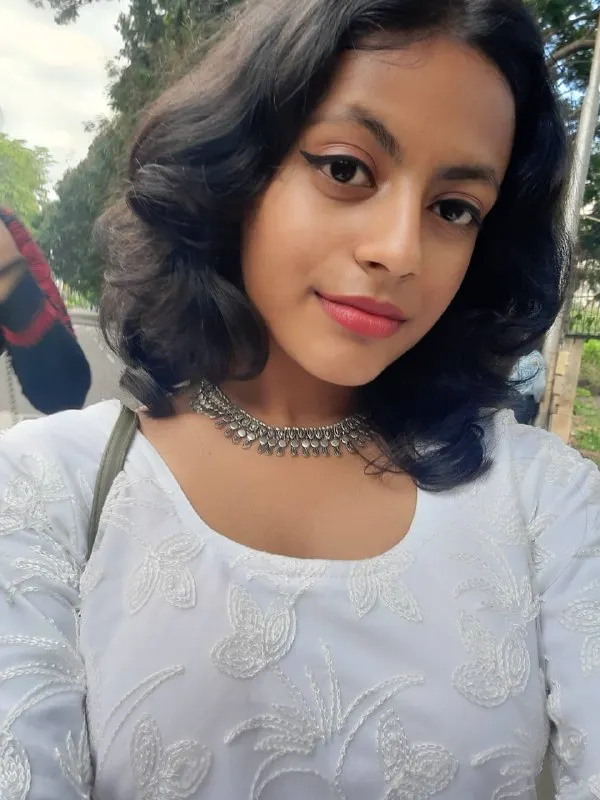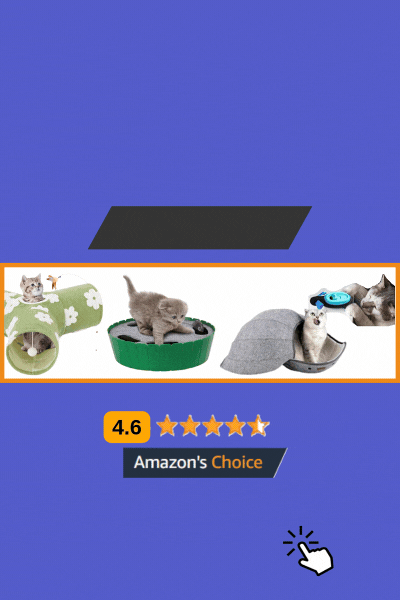Expressing love and gratitude for your partner doesn’t require a special occasion. Whether it’s a random Wednesday or a lazy Sunday, gifting flowers can add brightness to their day. In this article, we present you with 10 types of blue and orange flowers perfect for surprising your partner.
These flowers are not only available in nearby markets but can also be grown from seeds. We hope you discover the ideal blue and orange flowers from our comprehensive list to gift your special someone.
10 Types of Blue and Orange Flowers To Give Your Partner
1) Smooth Blue Aster
| Scientific Name | Symphyotrichum laeve |
| Size | 20 to 70 centimeters |
| Identification | Blue flowers with an orange center |
| Geographic Location | Native to Canada |
Smooth Blue Aster, lives up to its name with hairless leaves of various shapes.
The flower heads come with 13 to 23 ray florets in calming shades of blue or purple
The aster’s seeds, called cypselae, come with pappi – bristles at their tips.
It is a low-maintenance and charming flower that requires well-drained soil.
So, you can either choose to grow them yourself or buy them to add a hint of dual tone to your bouquet.
2) Bird of Paradise

| Scientific Name | Strelitzia reginae |
| Size | Approximately 2 meters tall |
| Identification | It has beak-like sheaths, giving it the appearance of a bird’s head and beak. |
| Geographic Location | Native to the Cape Provinces and KwaZulu-Natal in South Africa |
Bird of Paradise is nothing short of a royal celebrity. It has a vibrant orange sepal and purplish-blue or white petals.
It’s so regal that its specific epithet, “reginae,” means “of the queen,” paying homage to the British queen Charlotte.
Its unique beak-like spathe gives it the appearance of a bird’s head and beak, creating a comfortable perch for sunbirds.
It’s a low-maintenance plant that tolerates light frosts but isn’t a fan of temperatures below 10 °C (50 °F).
3) Aster tongolensis
https://in.pinterest.com/pin/847732329880033786/
| Scientific Name | Aster tongolensis |
| Size | 1 to 3 feet |
| Identification | Daisy-like flowers with orange center |
| Geographic Location | Native to South America |
It is a vital member of the Aster genus, has a rich history in traditional Tibetan medicine.
It has beautiful violet-blue ray florets and contrasting orange-yellow disk florets.
Give this aster what it loves – well-drained, fertile soil basking in full sun and it will rise to its full glory!
It is also important to keep an eye out for wilt disease, powdery mildew, and botrytis.
4) Edging Lobelia

| Scientific Name | Lobelia erinus |
| Size | 6 to 9 inches |
| Identification | Distinct two-lipped tubular flowers with five lobes. |
| Geographic Location | Some species are native to South Africa |
The plants in the Lobelia, a flower genus come in over 400 varieties. While most of them are not officially named, the common ones are blue.
This specific plant produces blue flowers with white and bright orange centers.
Lobelia inflata, also known as Indian tobacco, has a history in traditional medicine.
Lobelias are spread worldwide, primarily in tropical to warm temperate regions.
5) Garden Pansy
| Scientific Name | Viola × wittrockiana |
| Size | Grows up to 23 cm in height. |
| Identification | Has large, showy flowers with two overlapping upper petals, two side petals, and a single bottom petal. |
| Geographic Location | Europe and western Asia |
The pansy’s flower is 5 to 8 centimetres in diameter, with two slightly overlapping upper petals, two side petals, and a single bottom petal.
The petals come in various colors, including white, yellow, purplish, or blue.
Modern horticulturists have developed a wide range of pansy flower colors, including yellow, gold, orange, purple, violet, red, white, and near-black.
They require well-draining soils, moderate temperatures, and selective watering for optimal growth.
6) Saffron Crocus

| Scientific Name | Crocus sativus |
| Size | 10 to 30 cm |
| Identification | Bright blue-purple flower with long orange stigmas |
| Geographic Location | Likely originated from Western or Central Asia |
The blue and orange flower, scientifically known as Crocus sativus, boasts stylish petals with hints of blue and purple hues and orange stigmas.
You’d be surprised to know that these bright orange stigmas are none other than the saffron, the spice adored in kitchens worldwide.
It’s not just a pretty flower; it adds flavor, color, and even mood-enhancing vibes to your favorite dishes.
7) Himalayan blue poppies

| Scientific Name | Meconopsis grandis |
| Size | Grows to 1 meter |
| Identification | Large blue flowers with a prominent yellowish-orange center |
| Geographic Location | Native to China, Bhutan, North East India, and Nepal |
The Himalayan blue poppy sets the mood in your garden with its vibrant blue petals and a yellowish-orange central head.
It prefers a cool shady place and a rich, moist environment for abundant growth.
But don’t let its beauty fool you as these flowers are notorious for being a bit of a challenge to grow.
It is a high-maintenance plant. It craves partial shade, detests hot afternoon sun, and demands a soil mix fit for a king.
8) Primula ‘Zebra Blue’
| Genus | Primula |
| Size | 6-8 inches tall |
| Identification | Large blue and white striped flowers with a bright yellowish-orange center |
| Geographic Location | Native to western and southern Europe, northwest Africa, and parts of southwest Asia |
If in your bouquet, it is seen sporting stylish blue and white stripes with a bright yellow heart!
It grows to a decent size of 2 inches from late winter to late spring throughout the year.
It’s a low-maintenance plant that will be a perfect fit for your borders, containers, or even a city garden.
When planting yourself just remember to look out for its not-so-secret enemies—aphids, leafhoppers, vine weevils, slugs, and the infamous glasshouse red spider mites.
9) Empire blue butterfly bush
| Scientific Name | Buddleja davidii ‘Empire Blue’ |
| Size | 5 feet tall |
| Identification | Fragrant blue-violet flowers with orange eyes |
| Geographic Location | Native to central China, and Japan |
This beautiful flower is sure to catch a second glance with its fragrant violet-blue blooms and dazzling orange eyes.
The Empire Blue Butterfly Bush is a perennial plant and with proper trimming, it continues to bloom throughout the year.
It effortlessly grows with other plants. Whether in mass plantings, general garden use, or even a small container, it’s the friendliest shrub that attracts not only butterflies but also hummingbirds and bees.
10) Moraea tulbaghensis
| Scientific Name | Moraea tulbaghensis |
| Size | Up to 0.4 m high |
| Identification | Orange or brick-red blooms with blue-green spots |
| Geographic Location | Confined to Cape in South Africa |
This beautiful and colorful flower can be compared to the iridescent green and blue beetle we had discussed before.
It has orange petals adorned with bright and eye-catching blue/green spots.
It blooms during the spring and takes a break during the scorching summer months.
It’s an endangered species, rarely seen in the wild due to habitat loss, but often seen with florists and gardeners.
Conclusion
As we conclude another vibrant article in our ongoing series of exploring nature and unveiling its gifts, our hope is to inspire and provide ideas for cultivating these unique blue and orange flowers. While not as common, they can thrive in anything from a small container to a lavish garden.
Stay tuned for new articles every single day
References
- https://www.anniesannuals.com/plants/view/?id=5533
- https://www.almanac.com/plant/petunias#:~:text=The%20flowers%20reach%202%C2%BD%20to,bounce%20back%20well%20after%20rain.
- https://www.gardenia.net/plant/primula-zebra-blue
- https://plants.oaklandnursery.com/12130001/Plant/638/Empire_Blue_Butterfly_Bush/
- https://www.anniesannuals.com/plants/view/?id=1959
- https://pza.sanbi.org/moraea-tulbaghensis#:~:text=Moraea%20tulbaghensis%20is%20a%20winter,by%20strong%20outer%20corm%20tunics.
- https://www.wikipedia.org/
Also Read:

Hi everyone, my name is Shawna, and I’ve always been fascinated by the fascinating diversity of flora and fauna that our nature has in it. I am currently studying biotechnology and am particularly interested in animal biotechnology, delving into the intricate processes that define their true nature and uniqueness.

